|

İstanbul'un Faunası; Yaban İstanbul
ISBN: 978-625-6762-17-6
Basım Sayısı: 1. Baskı Mart,2024, 543 sayfa
İstanbul Kültür ve Sanat Ürünleri Ticaret A.Ş.
Bölüm yazarları; Figen Esin Kayhan, Yavuz Turan
İstanbul'un çok çeşitli ekosistemlerindeki yaban hayatını detaylı bir şekilde ele alan İstanbul'un Faunası: Yaban İstanbul arkeolojik bulgulardan yabancı seyyahların gözlemlerine varıncaya kadar geniş kaynaklardan yararlanılarak hazırlandı.
|
|
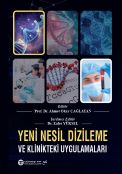 YENİ NESİL DİZİLEME ve KLİNİKTEKİ UYGULAMALARI YENİ NESİL DİZİLEME ve KLİNİKTEKİ UYGULAMALARI
Editör: Prof. Dr. Ahmet Okay Çağlayan; Yard. Edt.: Dr. Zafer Yüksel
ISBN: 978-975-277-977-8
Basım Sayısı: 1. Basım, 2024
BÖLÜM 3: Farmakogenetik ve Farmakogenetik Uygulamalarda Yeni Nesil Dizilme Yöntemlerinin Kullanımı, Belgin Süsleyici
Güneş Tıp Kitabevleri, 2024
İlaç yanıtındaki bireysel farklılıklar, bir ilacın farmakokinetiğini (FK; ADME: Absorption, Distribution, Metabolism, Excretion) yani ilacın emilimi, dağılımı, metabolizması, atılımı ve farmakodinamiğini (FD) (ilacın organizmadaki etkileri), kontrol eden genlerdeki varyasyonlardan kaynaklanabilir. Bu nedenle, sistemik olarak ilaca maruz kalma veya doku konsantrasyonlarında meydana gelen değişiklikler, genel olarak farmakolojik etkilerde farklılıklara yol açarken, hedef genlerdeki genetik varyasyonlar ise kişilerin optimal ilaç yanıtı için ihtiyaç duydukları ilaç konsantrasyonunu etkilemektedir. Farmakogenetik (PGx) uygulamalar, ilaç FK’de ve FD’de yer alan metabolize edici enzimleri, ilaç taşıyıcılarını ve ilaç hedeflerini (farmakogenler) kodlayan genlere ve bu proteinlerle etkileşime giren aracı moleküller ile birlikte çevresel faktörlere odaklanmaktadır.
|
|
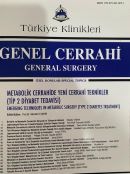 GENEL CERRAHİ GENEL CERRAHİ
Editör: Prof. Dr. Mustafa Taşkın
ISBN: 978-625-401-805-3
E-ISBN: 978-625-401-728-5
Basım Sayısı: 1. Basım, Haziran2022
BÖLÜM: Bireyselleştirilmiş Metabolik Cerrahi uygulamaları ve Genetik Testler, Belgin Süsleyici
Türkiye Klinikleri, 2022
Kişiselleştirilmiş genomik tıp ve cerrahi (KGTC), hastaların tedavilerinin genetik bilgilerine göre bireysel uygulanmasına yönelik sıklıkla kullanılmaya başlanan yeni bir yaklaşımdır. Bir hastanın genotipi, hastalığa yatkınlık ve tadavinin etkinliği hakkında önemli bilgiler verebildiğinden, kişiye özel hedefli görüntüleme ve tedavilere rehberlik eder. KGTC, genomik profillemeye dayalı daha spesifik tedavilerin belirlenmesinin yanı sıra etkisiz yada istenmeyen yan etkilere yol açan ilaç tedavilerini de ortadan kaldırmaktadır.
|
|
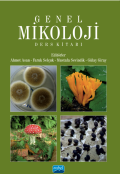 GENEL MİKOLOJİ - Ders Kitabı GENEL MİKOLOJİ - Ders Kitabı
Editörler: Ahmet Asan, Faruk Selçuk, Mustafa Sevindik, Gülay Giray
ISBN: 978-625-427-240-0
E-ISBN: 978-625-427-238-7
Basım Sayısı: 1. Basım, Ekim 2022
BÖLÜM 15 LİKENLER, Gülşah Çobanoğlu
NOBEL AKADEMİK YAYINCILIK, 2022
|
|
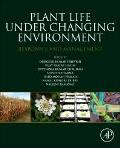 PLANT LIFE UNDER CHANGING ENVIRONMENT PLANT LIFE UNDER CHANGING ENVIRONMENT
ISBN 978-0-12-818204-8
Editors: Durgesh Tripathi, Vijay Singh, Devendra Chauhan, Shivesh Sharma, Sheo Prasad, Nawal Kishore Dubey, Naleeni Ramawat
Elsevier, 2020.
Chapter 1: Abiotic Stress-Induced Programmed Cell Death in Plants (pages:1-24).
Fatma Yanık, Aslıhan Çetinbaş-Genç and Filiz Vardar
Responses and Management present the latest insight, reflecting the significant progress that has been made in understanding plant responses to various changing environmental impacts, as well as strategies for alleviating their adverse effects, including abiotic stresses. Growing from a focus on plants and their ability to respond, adapt and survive, Plant Life under Changing Environment: Responses and Management addresses options for mitigating those responses to ensure maximum health and growth. Researchers and advanced students in environmental sciences, plant ecophysiology, biochemistry, molecular biology, nano-pollution, climate change, and soil pollution will find this an important foundational resource.
|
|
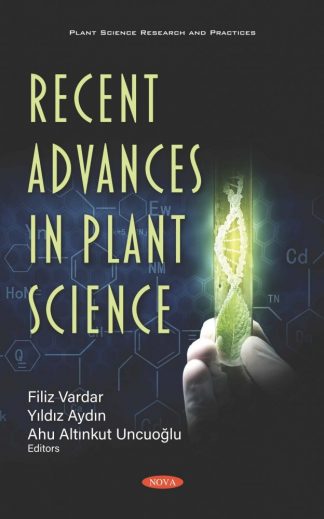 RECENT ADVANCES IN PLANT SCIENCE RECENT ADVANCES IN PLANT SCIENCE
ISBN 978-1-53617-265-2
Editors: Filiz Vardar, Yıldız Aydın, Ahu Altınkut-Uncuoğlu
Nova Science Publishers, 2020.
Chapter 12: Programmed Cell Death in Plant Reproductive Development
Aslıhan Çetinbaş-Genç and Filiz Vardar (pages: 341-362)
Chapter 14: The Effects of Putrescine Application against Aluminum Toxicity in Wheat (Triticum aestivum) Roots (pages: 379-400)
Özge Akgün, Aslıhan Çetinbaş-Genç, Fatma Yanık and Filiz Vardar
This book compiles original and reviews advances from several different focuses and the latest developments in the important field of plant biology/science from around the world. The publication will be a beneficial and valuable resource for many people and groups related to plant growth and development as well as teachers, researchers, commercial growers, and advanced students of plant biological science. The proposed publication can be used in some interesting and unusual places such as biofuels, edible vaccines, phytoremediation, and cosmetics.
|
|

ENVIRONMENTAL CONCERNS AND SUSTAINABLE DEVELOPMENT
Volume 1: Air, water and energy resources
Editors: Shukla, Vertika, Kumar, Narendra (Eds.)
ISBN 978-981-13-5888-3 (Hardcover)
ISBN 978-981-13-5889-0 (eBook)
Springer Nature Singapore Pte Ltd., 2020.
Use of Lichens in Biological Monitoring of Air Quality (Pages 61-95) Çobanoğlu Özyiğitoğlu, Gülşah
In recent years, nanotechnology has exhibited exponential growth in various sectors to accomplish market commodities with higher prospective applications. The small size particles (nanomaterials) are rapidly being used in the manufacturing of products of our daily life such as biosensors, cosmetics, food packaging, imaging, medicines, drug delivery, aerospace engineering, etc., and these products are coming in the global market approximately at the rate of 3–4 per week. In spite of the manifold benefits of the power of nanomaterials, there are open questions about how the small-sized materials affect the environment and human health, while very few reports are available on the hazards of nanoparticles. Compared to the bulk counterpart, the small size and large specific surface area of nanoparticles endow them with high chemical reactivity and intrinsic toxicity. Such unique physicochemical properties of nanoparticles draw the global attention of scientists and environmental watchdogs to study potential risks and adverse effects of nanomaterials in the environment. Nanoparticle toxicity has pronounced effects and consequences not only for plants but also for the ecosystem in which the plants form an integral component. Plants growing in nanomaterial-polluted sites exhibit altered metabolism, growth reduction, lower biomass production, and nanoparticle accumulation, and these functions are of serious human health concern.
|
|
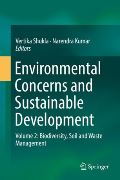 ENVIRONMENTAL CONCERNS AND SUSTAINABLE DEVELOPMENT ENVIRONMENTAL CONCERNS AND SUSTAINABLE DEVELOPMENT
Volume 2: Biodiversity, Soil and Waste Management
Editors: Shukla, Vertika, Kumar, Narendra (Eds.)
ISBN 978-981-13-6357-3 (Print)
ISBN 978-981-13-6358-0 (eBook)
Springer Nature Singapore Pte Ltd., 2020.
Environmental Significance of Lichens and Biodeterioration Pages 247-277 Gülşah Çobanoğlu Özyiğitoğlu
The current global environmental crisis is primarily the result of non-standardized parameters for environmental regulation and is impacting e.g. clean air, safe drinking water, and the quality of food, particularly in developing nations. Due to their poor/lax execution of EIA protocols, newly developing countries are preferred destinations for establishing pollution-emitting industries, which results in the degradation and depletion of their natural resources. The lack of environmental policy intervention is another major incentive to base “dirty” industries in these nations. To ensure sustainable development, the highest-priority issues include the monitoring and eradication of environmental problems stemming from economic development; virtually every form of economic development primarily results in the loss of forests and thus biodiversity, followed by declining air quality and the contamination of natural resources. Sustainable development ensures responsible interactions with the environment, to minimize the depletion or degradation of natural resources and preserve environmental quality. It involves integrated approaches to understanding the importance of environmental management systems and policy measures that lead to improved environmental performance. This book addresses the environmental concerns associated with economic development and with approaches to attaining sustainable economic development, which include monitoring the quality of water resources, soil erosion, and degradation of the natural environment.
|
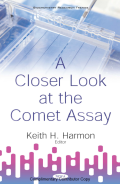 A CLOSER LOOK AT THE COMET ASSAY A CLOSER LOOK AT THE COMET ASSAY
ISBN 978-1-53616-341-4
Editor: Keith H. Harmon
Nova Science Publishers, 2019.
Chapter 7: Determination of Aluminum-Induced Oxidative and Genotoxic Effects in Sunflower Leaves (pages: 143-170)
Aslıhan Çetinbaş-Genç, Elif Kılıç-Çakmak, Fatma Yanık, Filiz Vardar, Ahu Altınkut-Uncuoğlu and Yıldız Aydın.
A Closer Look at the Comet Assay opens with a discussion on the clinical applications of the comet assay. Comet assay is a rapid, simple method that can assess DNA damage in different samples like blood, cells, and tissues. Following this, the authors examine comet assay usage in occupational toxicology studies. |
|
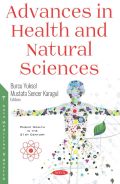 ADVANCES IN HEALTH AND NATURAL SCIENCES ADVANCES IN HEALTH AND NATURAL SCIENCES
ISBN 978-1-53614-639-4
Eds: Burcu Yüksel, Mustafa Sencer Karagül
Nova Science Publishers, 2018.
Chapter 10: Aluminum-Induced Toxicity and Programmed Cell Death in Plants (pages: 155-182)
Filiz Vardar, Fatma Yanık, Aslıhan Çetinbaş-Genç and Gamze Kurtuluş
Chapter 12: Single Cell Gel Electrophoresis for Determination of Plant Responses to Genotoxic Stress (pages: 203-222)
Yıldız Aydın, Ahu Altınkut Uncuoğlu and Filiz Vardar
Researchers and graduate students need to keep up with the advances in natural and health sciences that occur almost daily. This edited collection of state-of-the-art chapters will provide scientists, educators, and researchers in this vital field with the most recent developments and disseminate them globally. This book, organized into nine chapters, features scientists from around the globe contributing diverse topics in mostly natural, biological, and health sciences. The edited book aims at highlighting the state-of-the-art research and recent findings in agricultural, environmental, biological, marine, and medical sciences and biotechnology, and bridging theoretical research with current applications. This edited book will be of significant value to researchers, graduate students as well as practicing scientists working in these vibrant fields.
|
|
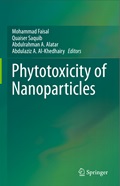 PHYTOTOXICITY OF NANOPARTICLES PHYTOTOXICITY OF NANOPARTICLES
ISBN 978-3-319-76707-9
ISBN 978-3-319-76708-6 (eBook)
Springer International Publishing AG part of Springer Nature, 2018.
Mechanism and Interaction of Nanoparticle-Induced Programmed Cell Death in Plants (Pages: 175-196)
Fatma Yanık, Filiz Vardar
In recent years, nanotechnology has exhibited exponential growth in various sectors to accomplish market commodities with higher prospective applications. The small size particles (nanomaterials) are rapidly being used in the manufacturing of products in our daily lives such as biosensors, cosmetics, food packaging, imaging, medicines, drug delivery, aerospace engineering, etc., and these products are coming into the global market approximately at the rate of 3–4 per week. Despite the manifold benefits of the power of nanomaterials, there are open questions about how small-sized materials affect the environment and human health, while very few reports are available on the hazards of nanoparticles. Compared to the bulk counterpart, the small size and large specific surface area of nanoparticles endow them with high chemical reactivity and intrinsic toxicity. Such unique physicochemical properties of nanoparticles draw the global attention of scientists and environmental watchdogs to study potential risks and adverse effects of nanomaterials in the environment. Nanoparticle toxicity has pronounced effects and consequences not only for plants but also for the ecosystem in which the plants form an integral component. Plants growing in nanomaterial-polluted sites exhibit altered metabolism, growth reduction, lower biomass production, and nanoparticle accumulation, and these functions are of serious human health concern.
|
|
ZOOLOJİ
ISBN numarası: 978-605-320-489-3
Çeviri Editörü: Prof. Dr. Abdurrahman Aktümsek
Yayınevi ve yayın tarihi: Nobel Akademik Yayıncılık Eylül 2016, 9.basımdan çeviri.
yayın no: 1582
Bölüm adı:10.Bölüm. Tribloblastik, Asölomat Vücut Planı. Doç. Dr. Figen Esin KAYHAN
Özet: Bu bölümde ana filum (Platyhelminthes) ile diğer filumlar arasındaki evrimsel ilişkiler ve zıtlıklar açıklanmıştır. Morfolojik verilere ilaveten, bilateral simetrili hayvanların üç önemli klasını destekleyen rRNA sekansları kullanarak yeni hayvan filogenisi önerilmiştir.
|
 CLIMATE CHANGE IMPACTS ON HIGH ALTITUDE ECOSYSTEMS CLIMATE CHANGE IMPACTS ON HIGH ALTITUDE ECOSYSTEMS
Editors: Öztürk, M., Hakeem, K.R., Faridah-Hanum, I., Efe, R. (Eds.)
ISBN 978-3-319-12859-7
Springer, 2015
Soil–Plant Interactions in the High-Altitude Ecosystems: A Case Study from Kaz Dağı (Mount Ida), Turkey (Pages 343-360)
Ibrahim Ilker Ozyigit (et al.)
This book covers studies on the systematics of plant taxa and will include general vegetational aspects and ecological characteristics of plant life at altitudes above 1000 m. from different parts of the world. This volume also addresses how upcoming climate change scenarios will impact high-altitude plant life. It presents case studies from the most important mountainous areas like the Himalayas, Caucasus, and South America covering countries like Malaysia, Sri Lanka, India, Nepal, Pakistan, Kirghizia, Georgia, Russia, Turkey, Indonesia, Malaysia, and the Americas. The book will serve as an invaluable resource source for undergraduates, graduate students, and researchers.
|
 Soil Remediation and Plants Soil Remediation and Plants
Plant-Microbe interactions in Phytoremediation (Pages 255-272)
Ibrahim İlker Özyiğit, İlhan Doğan
K. Rehman Hakeem et. al. (Eds.) Academic Press, Elsevier, 2015
ISBN: 978-0-12-79937-1
Our atmosphere, water resources, and soil are becoming increasingly contaminated with inorganic and organic compounds as a result of anthropogenic-driven inputs, mainly from industry, mining, motorized traffic, agriculture, logging, and military actions. Alleviation and prevention of environmental pollution can be achieved by the utilization of plants and their associated microbes. Recent advances in plant-microbe interactions research revealed that plants can shape their rhizosphere microbiome through active secretion of substrates that are known to vary between plant species. Soil-borne microorganisms such as actinobacteria, algae, protozoa, and different types of bacteria having different capabilities of functional activities can vary extensively in soils and occur in associations in the rhizosphere of plants. Microbial associations are known to affect the mobility and availability of substances to the plant through the release of chelating agents, acidification, phosphate solubilization, and redox changes and exudates derived from the plant can help to stimulate the survival and action of these microorganisms. Broad knowledge of the mechanisms in plants for the uptake, translocation, storage, and detoxification of contaminants, and interactions between plants and microorganisms are crucial in developing technologies and better management practices for environmental cleanup. A comprehensive understanding of interactions between plants and rhizospheric microorganisms in the rhizosphere and plant-based processes will provide new opportunities to develop more efficient plants and better management practices for the removal of contaminants. This chapter reviews plant-microbe interactions in phytoremediation with particular reference to the microbial dynamics in the rhizosphere of plants growing on contaminated soils.
|
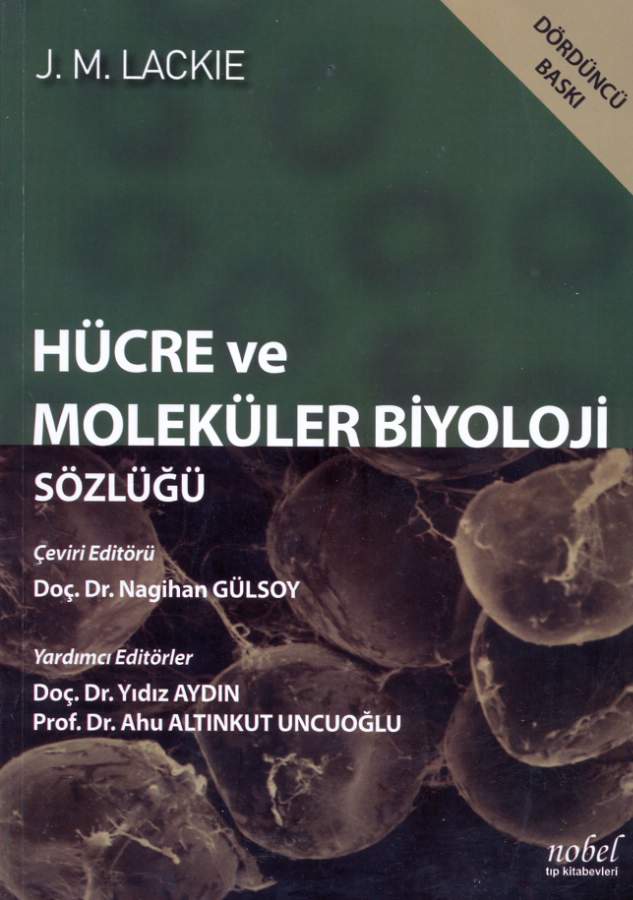 Hücre ve Moleküler Biyoloji Sözlüğü Yayım tarihi: 07/2014 Yazar: J. M. Lackie Hücre ve Moleküler Biyoloji Sözlüğü Yayım tarihi: 07/2014 Yazar: J. M. Lackie
Çevirmen: Doç. Dr. Nagihan Gülsoy, Doç. Dr. Yıldız Aydın, Prof. Dr. Ahu Altınkut Uncuoğlu
Yayınevi: Nobel Tip Kitabevi, İstanbul
ISBN: 9786053350613 522 sayfa Baskı Sayısı: 4
|
|
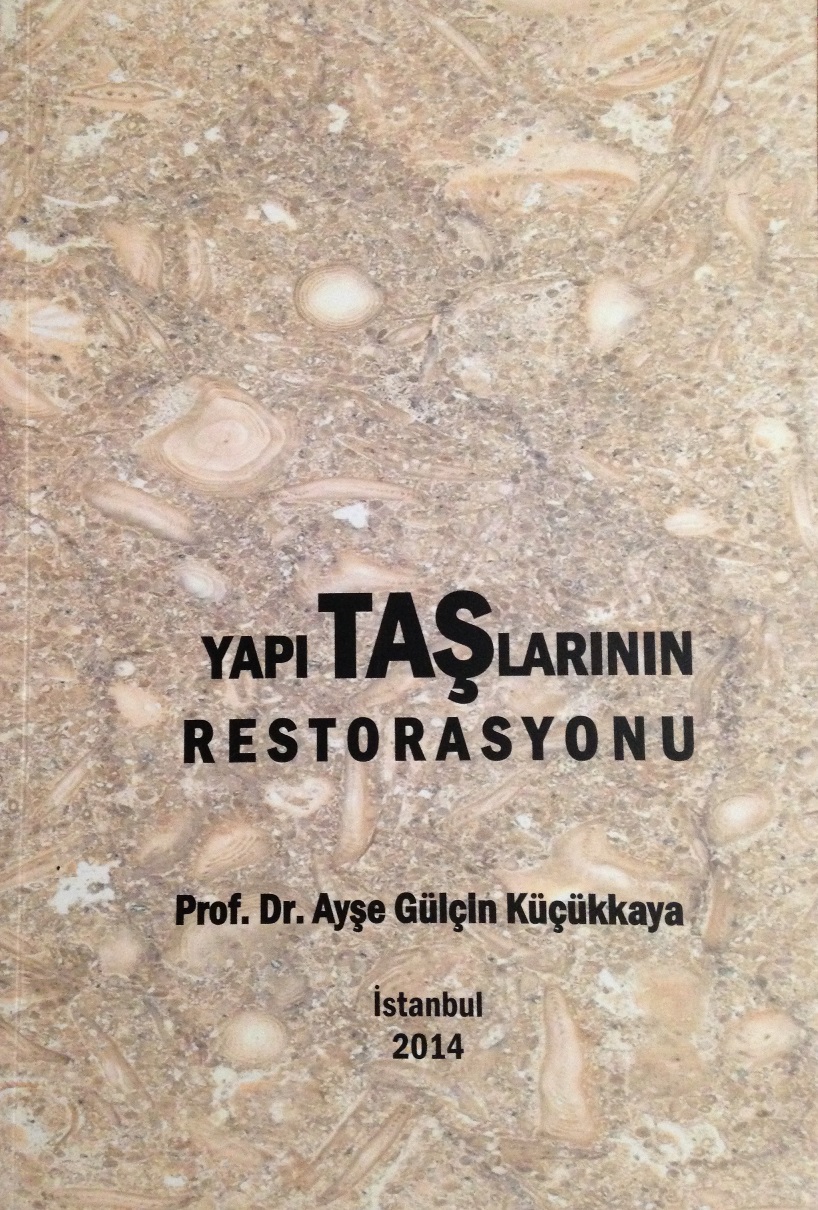
Yapı Taşlarının Restorasyonu
(Prof. Dr. Ayşe Gülçin KÜÇÜKKAYA)ÇOBANOĞLU, Gülşah. Bölüm II. II. IV - Pp.87-104.
Özlem Matbaacılık, İstanbul 2014
ISBN: 978-605-64823
Kitapta eski eserlerde kullanılan taşların tahrip nedenleri, bozulma şekilleri ve uygulanacak modern restorasyon tekniklerinin tanıtılması amaçlanmıştır. Biyolojik bozulmanın en önemli şekli olan oyukların oluşumunda, kayaç yüzeyinde gelişen mantarlar, mavi-yeşil yosun (Cyanobacteria), su yosunu (algler) ve likenler gibi organizmaların etkilerinden bahsedilmiştir.
|
|

CURRENT PROGRESS IN BIOLOGICAL RESEARCH
ISBN: 978-953-51-1097-2
Editor: Marina Silva-Opps
2013 InTech
Chapter 14: Callose in Plant Sexual Reproduction
Meral Ünal, Filiz Vardar, Özlem Aytürk
Callose, which is a 1,3- β- glucan polymer with some 1,6 branches, is involved in diverse biological processes associated with plant development, and biotic and abiotic stress responses. Callose plays important role in the reproductive biology of angiosperms. It appears around microsporocytes and megasporocytes during meiosis. It can be suggested possible that callose is involved in some aspects of meiosis in higher plants. Furthermore, it is also involved in plasmodesmata regulation, and cell plate formation, in response to multiple biotic and abiotic stresses. Although remarkable progress has been performed, there are still some unexplained cases, such as the biochemical pathway of callose synthesis, functional components of callose synthase complex, and signal pathway of callose synthesis. The future perspectives in biochemistry, cell biology, genetics, and molecular biology will be helpful in improving our knowledge
|
|
 Crop Improvement Crop Improvement
Agrobacterium rhizogenes-Mediated Transformation and Its Biotechnological Applications in Crops, (Pages: 1-48).
Doç. Dr. İbrahim İlker ÖZYİĞİT
K. Rehman Hakeem et al. (Eds.), Springer Science + Business Media, LLC 2013
ISBN 978-1-4614-7027-4
The history of Agrobacterium-related plant biotechnology goes back for more than three decades with the discovery of molecular mechanisms of crown gall disease in plants. After the 1980s, gene technologies began developing rapidly and today, related to the improved gene transfer methods, plant biotechnology has become one of the most important branches of science. Till now, the most important genes related to agricultural affairs have been utilized for the cloning of plants with the deployment of different techniques used in genetic engineering. Especially, Agrobacterium tumefaciens was used extensively for transferring desired genetic materials to plants rapidly and effectively by researchers to create transgenic plants. Recognition of the biology of Agrobacterium species and newly developed applications of their T-DNA systems has been a great step in plant biotechnology.
|
|
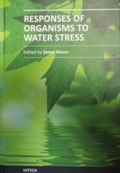 Responses of Organisms to Water Stress Responses of Organisms to Water Stress
Edited by Sener Akıncı
Publisher: InTech, 2013
ISBN 978-953-51-0933-4, Hardcover, 179 pages
The same amount of water has been present on our planet for about 4 billion years, since shortly after the Earth was formed. Since then it has cycled through evaporation, condensation, precipitation, and surface runoff multiple times. Water scarcity as an abiotic factor ranging from moderate to severe stress levels, accompanied by loss of moisture in the soil, is extremely hard for most organisms to cope with, particularly terrestrial plants and their food-chain dependents. Because of the potential for increasing temporary, or possibly permanent, drought conditions in the future, there is an intense focus on improving plant resistance to drought and increasing yield performance in water-limited environments through genotype selection in important crops. This book aims to contribute to the understanding of how plants and other organisms respond to water stress conditions, and the various survival strategies adopted under differing moisture levels.
|
 Gelişim Biyolojisi Gelişim Biyolojisi
Bölüm 1:Gelişim Anatomisi, Dr. Cenk Sesal, Çeviri Ed:Prof. Dr. Melike Erkan, Prof. Dr. Tülay İrez
2013, Nobel Tıp Kitabevleri Ltd. Şti.
ISBN: 978-975-420-954-9
Developmental Biology, 9th Edition, Scott F. Gilbert, Sinauer Associates, Inc. ISBN-13: 978-0-87893-384-6
|
|
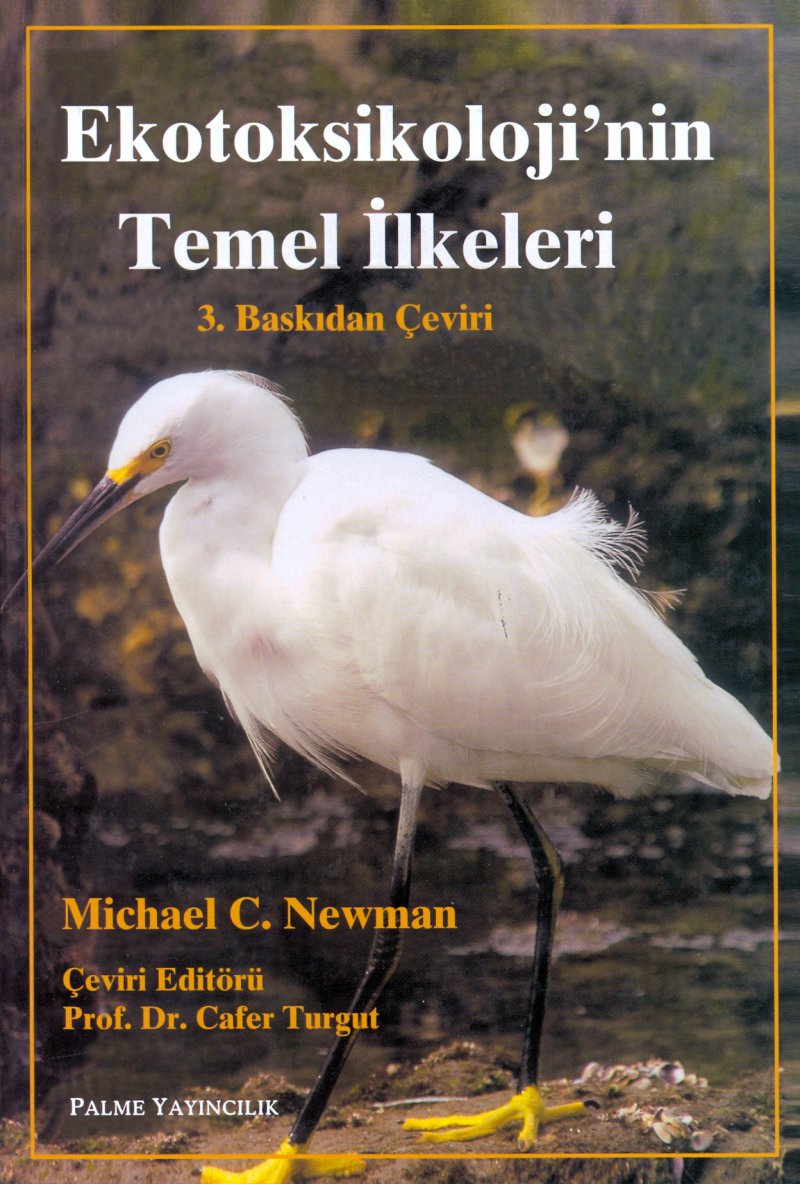 EKOTOKSİKOLOJİ’NİN TEMEL İLKELERİ EKOTOKSİKOLOJİ’NİN TEMEL İLKELERİ
ISBN: 978-605-355-148-5
Michael C. NEWMAN
Çeviri Editörü: Prof. Dr. Cafer TURGUT
5. Bölüm Çevirisi: Doç. Dr. Figen Esin KAYHAN
Palme Yayıncılık, Ankara 2013-04-29
Dünyada ve Türkiye’de hızla gelişen yeni bir bilim dalı olan Ekotoksikoloji’nin ülkemizde hak ettiği yeri alması ve bu konuda Türkçe kaynak kitap eksikliğini gidermek amacıyla “Ekotoksikoloji’nin Temel İlkeleri” kitabı kişilerin doğru bilgilere ulaşarak kullanması için İngilizce’den çevrilmiştir. Bu kitap biyoloji, kimya, çevre sağlığı, çevre mühendisliği, veterinerlik, ziraat, su ürünleri ve sağlık bilimleri alanlarında öğrenim gören öğrencilerin yararlanabileceği on dört bölümden oluşmaktadır. Kitapta yer alan bölümlerin farklı üniversite ve disiplinlerdeki değerli araştırmacıların özverili çalışmalarıyla çevrilmiş olması bu bilim alanının gelişmesine büyük katkı sağlayacaktır.
|
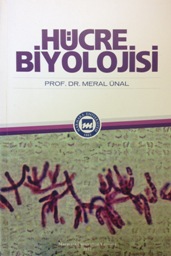 Hücre Biyolojisi Hücre Biyolojisi
Prof. Dr. Meral ÜNAL
ISBN 975-400-349-9
Marmara Üniversitesi Yayınevi 2012 (1. Basım)
Marmara Üniversitesi Yayınları 801
Hücre Biyolojisi kitabı Biyoloji Eğitimi alan öğrenciler için ders kitabı olarak hazırlanmıştır. Bir dönemde okutulacak şekilde konuların kısa ve öz tutulmasına, sade ve anlaşılır bir dille yazılmasına gayret edilmiştir. Biyoloji Bölümü programındaki bir çok dersin temelini oluşturacak olan bu ders kitabında, yapılar ve olaylar şekiller ile daha anlaşılır kılınmaya çalışılmıştır. Bazı terimlerin Türkçe karşılığının bulunmasında zorluklar yaşanmış ve yabancı dildeki asılları kullanılmıştır. Bu kitap "öğrencilere canlıların temel taşı" olan hücreyi tanıtabilir ve onları araştırmaya yönlendirir ise amacımıza ulaşmış olacağız.
|
|
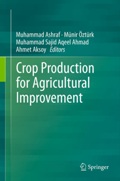 Crop Production for Agricultural Improvement Crop Production for Agricultural Improvement
Agrobacterium tumefaciens and Its Use in Plant Biotechnology, (Pages: 317-361).
Doç. Dr. İbrahim İlker ÖZYİĞİT
M. Ashraf et al. (Eds.), Springer Science + Business Media Dordrech 2012
ISBN 978-94-007-4116-4
For years, isolation of foreign genes from one plant and transferring them to another and then observing the effects of new genes in transferred plants has only been a dream for a plant biologist. Today, many commercially important species are routinely transformed by different biotechnological methods. Methods available for plant transformation are arranged in three main groups: using biological vectors (virus- or bacteria -mediated transformation), direct DNA transfer techniques (chemical-, electrical-, or laser-induced permeability of protoplasts or cells), and non-biological vector systems (microprojectiles, microinjection or liposome fusion). Today in many countries a number of transgenic important crops such as soybean, maize, cotton, canola, sugarbeet, sugarcane and alfalfa are available and the most preferred method is Agrobacterium-mediated transformation. In this chapter, some information about this important bacterium and mechanisms of Agrobacterium-mediated gene transfer is presented.
|
|
 Water Stress Water Stress
Plant Water-Stress Response Mechanisms
Şener Akıncı,* and Dorothy M. Lösel
edited by Ismail Md. Mofizur Rahman and Hiroshi Hasegawa
ISBN 978-953-307-963-9, Published: January 25, 2012
Drought (water stress) is one of the major abiotic stress factors that affect all organisms' lives including humans in terms of health and food. Water absence from the soil solutions affects the natural evaporative cycle between the earth and the atmosphere which contribute to the amount of rainfall. Drought occurs when soil moisture level and relative humidity in the air are low while the temperature is also high. UN reports (2006) [1] estimate that one-third of the world population has been living in areas where the water sources are poor. Water stress resulting from the withholding of water also changes the physical environment for plant growth as well as crop physiology [2]. Almost every plant process is affected directly or indirectly by water supply [3]. Plants, as one of the basic food sources, either in nature or cultivations, in their growing period, require water or at least moisture for germination. Certainly, most land plants are exposed to short or long-term water stress at some time in their life cycle and have tended to develop some adaptive mechanisms for adapting to changing environmental conditions.
|
|
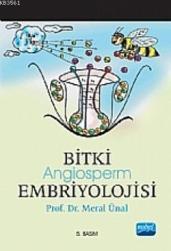 Bitki Embriyolojisi Bitki Embriyolojisi
Prof. Dr. Meral Ünal
2011 (5. Baskı) Nobel Yayınevi
ISBN 978-605-133-081-5
“Bitki (Angiosperm) Embriyolojisi” kitabı, üniversitelerin Biyoloji Bölümlerinde okutulan Bitki Embriyolojisi dersi göz önüne alınarak hazırlanmıştır. Bu konuda yayımlanan tek Türkçe kitaptır. Basit bir dil ile yazılarak ve konu ile ilgili bol çizim ve fotoğraflar konarak kolay anlaşılır olması amaçlanmıştır. Hem klasik hem de son gelişmeleri içerdiğinden konu ile ilgili araştırma yapanların da yararlanabileceği ümit edilmektedir.
|
|
 Hücre Biyolojisi Laboratuvarı Hücre Biyolojisi Laboratuvarı
Prof. Dr. Meral Ünal, Arş. Gör. Dr. Filiz Vardar, Arş. Gör. Dr. Işıl İsmailoğlu
2011 (2. baskı) Nobel Yayınevi
ISBN 978-605-133-072-3
Hücre Biyolojisi Laboratuvarı" kitabı 2. sınıfta okutulan Hücre Biyolojisi (Sitoloji) dersinin laboratuvar çalışmalarında kullanılmak üzere hazırlanmıştır. Kolay bulunan materyaller ve uygulanması kolay yöntemler seçilmiştir. Öğrencinin aktif olduğu hem klasik hem de modern programlar hazırlanmış ve her laboratuvar sonuna öğrencinin kendini sınayabileceği çalışma soruları verilmiştir.
|
|
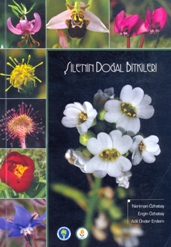 Şile'nin Doğal Bitkileri Şile'nin Doğal Bitkileri
Prof. Dr. Neriman Özhatay, Prof. Dr. Engin Özhatay, Adil Önder Erdem
2010, Işık Üniversitesi Yayınları
ISBN 978-975-6494-02-8
Şile'nin Doğal Bitkileri kitabında İstanbul'un üçüncü büyük ilçesi olan Şile'nin doğal bitki çeşitliliği tanıtılmaktadır. İlçede bugünkü bilgilerimize göre 800 kadar doğal çiçekli bitki ve eğrelti çeşidi yetişmektedir. Amacı bu zenginliği tanıtmak ve önemini okuyuculara anlatarak farkındalık yaratmak olan bu kitabın amacına ulaşması için 30 yılı aşkın İstanbul florası üzerinde araştırma yapan yazarlar (N. ve E. Özhatay) ile 10 yıldır İstanbul çiçeklerini fotoğraflayan doğa fotoğraf sanatçısı (A.Ö. Erdem) güç birliği yapmıştır.
|
|
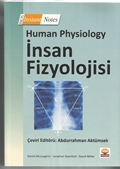 HUMAN PHYSIOLOGY- İNSAN FİZYOLOJİSİ HUMAN PHYSIOLOGY- İNSAN FİZYOLOJİSİ
Nobel Yayın Dağıtım 1. Baskıdan Çeviri 2010
Daniel McLaughlin, Jonathan Stamford, David White
ISBN:
Çeviri Editörü: Abdürrahim Aktümsek
Doç. Dr. Z. Ulya Nurullahoğlu
|
|
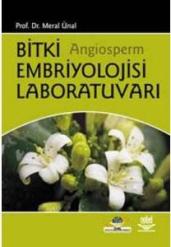 Bitki Embriyolojisi Laboratuvarı Bitki Embriyolojisi Laboratuvarı
Prof. Dr. Meral Ünal
2008 (1. Baskı) Nobel Yayınevi
ISBN 378-605-395-140-7
“Bitki (Angiosperm) Embriyolojisi Laboratuvarı” kitabı üniversitelerin biyoloji bölümlerinde okutulan “bitki Embriyolojisi” dersinin içeriğine paralel olarak hazırlanmıştır. Kitapta kolay bulunacak materyaller seçilmeye ve öğrenci merkezli programlar hazırlamaya özen göstermiştir. Programda çiçekli bir bitkinin eşey devrinde meydana gelen olaylar ve yapılar incelenmektedir.
|
|
 PRATİK BİYOKİMYA PRATİK BİYOKİMYA
ISBN:
Prof. Dr. Abdürrahim Aktümsek, Doç. Dr. Z. Ulya Nurullahoğlu
Nobel Yayın Dağıtım 2. Baskı - 2007
|
|
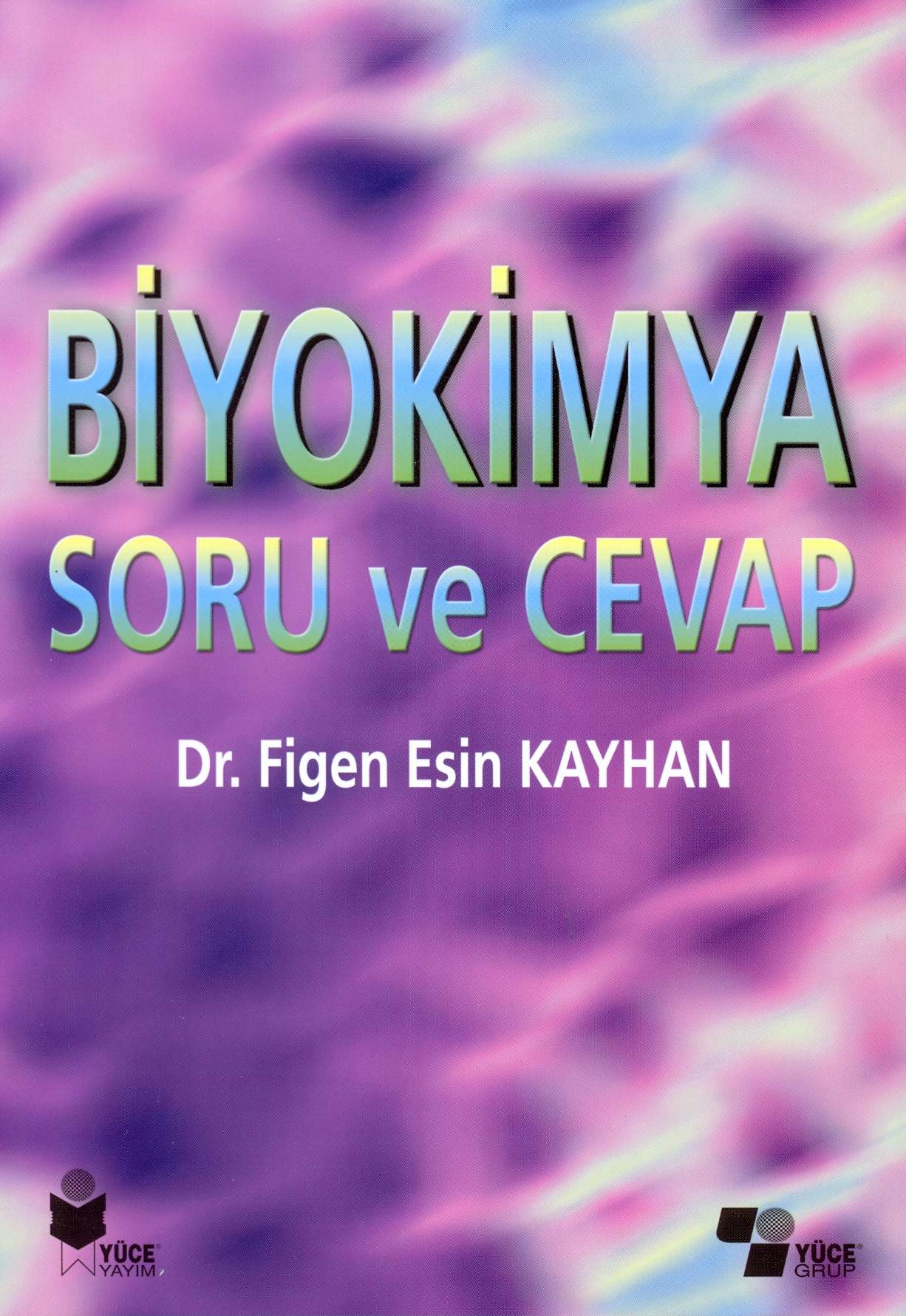 Biyokimya Soru ve Cevap Biyokimya Soru ve Cevap
Dr. Figen Esin Kayhan
2005, Yüce Reklam/Yayın/Dağıtım A.Ş.
ISBN 975-411-403-X
Biyokimya; tıp, tarım, gıda, boya, petrol, eczacılık ve sanayinin çeşitli dalları ile bütünleşebilen; canlılıkla ilgili süreçlerin ayırt edici özelliklerini sistematik olarak açıklamaya çalışan disiplinler arası bir bilim dalıdır. Doğadaki canlılar o denli kusursuzdur ki, teknolojik gelişmelerin bu mükemmelliğe ulaşması imkansızdır. Bir organizmada işleyen biyokimyasal reaksiyonlar şaşmaz bir disiplinle yollarını ve yerlerini bulurlar. Organizmalardaki bu kusursuzluğu sağlayan sistemlerin iyi tanınması ve öğrenilmesi gerekmektedir. Elinizdeki kitap, yaşamı moleküllerle anlatan Biyokimya bilimi ile ilgili pek çok ipucu ve püf noktalarını içermektedir. Ümit ederim ki, bu kitap Biyoloji ve Fen eğitimi yapan tüm öğrenciler için faydalı bir kaynak olsun…
|
|
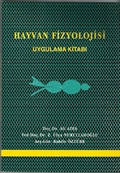 HAYVAN FİZYOLOJİSİ UYGULAMA KİTABI HAYVAN FİZYOLOJİSİ UYGULAMA KİTABI
ISBN:
Doç. Dr. Ali Ateş, Doç. Dr. Z. Ulya Nurullahoğlu, Ar. Gör. Rahile Öztürk
Selçuk Üniversitesi -2003
|
|
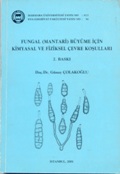 Fungal (Mantari) Büyüme İçin Kimyasal ve Fiziksel Çevre Koşulları Fungal (Mantari) Büyüme İçin Kimyasal ve Fiziksel Çevre Koşulları
Doç. Dr. Günay Çolakoğlu
Marmara Üniversitesi Yayın No. 613 / Fen Edebiyat Fakültesi Yayın No. 36
2001, Marmara Üniversitesi Döner Sermaye İşletmesi Teknik Eğitim Fakültesi Matbaa Birimi, İstanbul, Türkiye
ISBN 975-400-159-6
‘‘Fungal (Mantari) Büyüme İçin Kimyasal ve Fiziksel Çevre Koşulları’’ adlı kitapta mantarların fizyolojik özellikleri ve bu özelliklerinden dolayı gösterdikleri durumları örneklerle izah edilmektedir. Ayrıca kitapta adı geçen mantarlar cins ve tür seviyesinde şekilleri ile geniş literatür bilgisine yer verilmiştir.
|
|
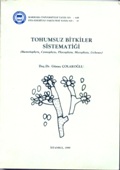 Tohumsuz Bitkiler Sistematiği (Bacteriophyta, Cyanophyta, Phycophyta, Mycophyta, Lichenes) Tohumsuz Bitkiler Sistematiği (Bacteriophyta, Cyanophyta, Phycophyta, Mycophyta, Lichenes)
Doç. Dr. Günay Çolakoğlu
Marmara Üniversitesi Yayın No. 648 / Fen Edebiyat Fakültesi Yayın No. 37
1999, Marmara Üniversitesi Teknik Eğitim Fakültesi Döner Sermaye İşletmesi Matbaa Birimi, İstanbul, Türkiye
ISBN 975-400-200-2
‘‘Tohumsuz Bitkiler Sistematiği (Bacteriophyta, Cyanophyta, Phycophyta, Mycophyta, Lichenes)’’ adlı kitap Thallophyta Altâlemi içinde yer alan Bacteriophyta (Viruslar, Riketsiyalar, Bakteriler), Cyanophyta (Maviyeşil algler), Phycophyta (Gerçek algler), Mycophyta (Funguslar) ve Lichenes (Likenler) Bölümlerini kapsamaktadır. Kitaptaki konuların kolayca anlaşılması açısından cins ve tür seviyelerinde bol miktarda şekillere ve geniş literatür bilgisine yer verilmiştir.
|
| |
| |
 A CLOSER LOOK AT THE COMET ASSAY
A CLOSER LOOK AT THE COMET ASSAY
 CLIMATE CHANGE IMPACTS ON HIGH ALTITUDE ECOSYSTEMS
CLIMATE CHANGE IMPACTS ON HIGH ALTITUDE ECOSYSTEMS Soil Remediation and Plants
Soil Remediation and Plants Hücre ve Moleküler Biyoloji Sözlüğü Yayım tarihi: 07/2014 Yazar: J. M. Lackie
Hücre ve Moleküler Biyoloji Sözlüğü Yayım tarihi: 07/2014 Yazar: J. M. Lackie  Gelişim Biyolojisi
Gelişim Biyolojisi Hücre Biyolojisi
Hücre Biyolojisi











 Crop Improvement
Crop Improvement Responses of Organisms to Water Stress
Responses of Organisms to Water Stress
 Crop Production for Agricultural Improvement
Crop Production for Agricultural Improvement Water Stress
Water Stress Bitki Embriyolojisi
Bitki Embriyolojisi Hücre Biyolojisi Laboratuvarı
Hücre Biyolojisi Laboratuvarı Şile'nin Doğal Bitkileri
Şile'nin Doğal Bitkileri
 Bitki Embriyolojisi Laboratuvarı
Bitki Embriyolojisi Laboratuvarı PRATİK BİYOKİMYA
PRATİK BİYOKİMYA Biyokimya Soru ve Cevap
Biyokimya Soru ve Cevap HAYVAN FİZYOLOJİSİ UYGULAMA KİTABI
HAYVAN FİZYOLOJİSİ UYGULAMA KİTABI Fungal (Mantari) Büyüme İçin Kimyasal ve Fiziksel Çevre Koşulları
Fungal (Mantari) Büyüme İçin Kimyasal ve Fiziksel Çevre Koşulları Tohumsuz Bitkiler Sistematiği (Bacteriophyta, Cyanophyta, Phycophyta, Mycophyta, Lichenes)
Tohumsuz Bitkiler Sistematiği (Bacteriophyta, Cyanophyta, Phycophyta, Mycophyta, Lichenes)